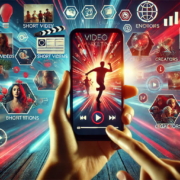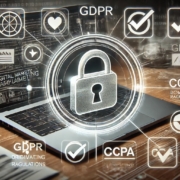Voice Search Optimization: Preparing Your Brand for the Future/10 Comments/in News/by admin
The way people search online is evolving, and voice search is leading the charge. With the growing adoption of smart devices like Amazon Alexa, Google Assistant, and Apple’s Siri, more users are turning to voice commands for quick answers, local recommendations, and online shopping. Preparing your brand for voice search is no longer optional—it’s essential.
Why Voice Search Is Important
Voice search is reshaping how people interact with technology. Here’s why it matters for your brand:
- Convenience and Speed: Voice search offers hands-free interaction, making it faster and easier than typing.
- Local Search Dominance: Many voice queries are location-based, such as “Where’s the nearest coffee shop?” making local optimization crucial.
- Changing Consumer Behavior: Consumers are relying on voice assistants to perform daily tasks, shop, and make decisions, increasing the importance of being voice-search friendly.
Learn more about voice search optimization.
How Voice Search Differs from Text Search
Voice queries are typically longer and more conversational than traditional text searches. Users often phrase their queries as questions, such as “What’s the best way to cook pasta?” instead of typing “best pasta recipe.”
Additionally, voice search tends to prioritize content that is concise and directly answers questions, favoring websites with clear, actionable information.
Explore detailed strategies at WebLiam.
Steps to Optimize Your Brand for Voice Search
- Use Conversational Keywords
Incorporate long-tail keywords and natural language phrases into your content. Focus on how people would ask questions verbally rather than typing. - Create FAQ Pages
Build FAQ pages that address common questions your audience may ask. Structure these pages in a question-and-answer format to align with voice search patterns. - Focus on Local SEO
For businesses targeting local customers, ensure your name, address, and phone number (NAP) are accurate across all platforms. Encourage customers to leave reviews, as these influence local search rankings. - Optimize for Mobile
Most voice searches happen on mobile devices, so having a mobile-friendly website with fast loading speeds is critical. Check your site’s mobile friendliness.
- Use Structured Data
Schema markup helps search engines understand your content better, increasing the likelihood of your website appearing in voice search results. - Target Featured Snippets
Position your content to answer questions clearly and concisely to increase the chances of being highlighted in featured snippets, which are often used for voice search answers.
Benefits of Voice Search Optimization
- Enhanced User Experience: Voice search optimization ensures users quickly find what they’re looking for.
- Increased Visibility: Ranking for voice queries can drive more traffic to your website.
- Competitive Advantage: Early adoption gives your brand an edge as voice search continues to grow.
Learn about advanced optimization techniques at WebLiam.
The Future of Voice Search
Voice search technology is becoming smarter, with advancements in artificial intelligence and natural language processing. In the future, voice assistants will deliver even more personalized and context-aware results, requiring brands to continually adapt their strategies.
Moreover, voice commerce is expected to grow, with more consumers using voice commands to shop online. Preparing your brand for this shift now will ensure you stay ahead in a competitive market. Discover future trends in voice commerce.
Conclusion
Voice search is transforming how consumers interact with brands. By optimizing your content for conversational queries, focusing on local SEO, and targeting concise answers, your brand can thrive in the era of voice search. Embrace this shift and position your business for long-term success in the rapidly evolving digital landscape.
Visit WebLiam for expert SEO services tailored to your needs.










